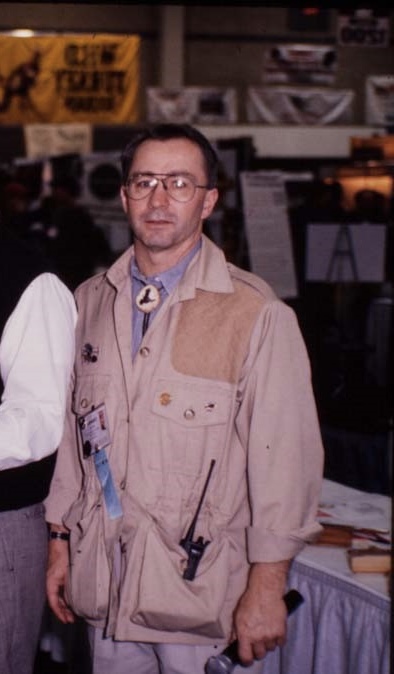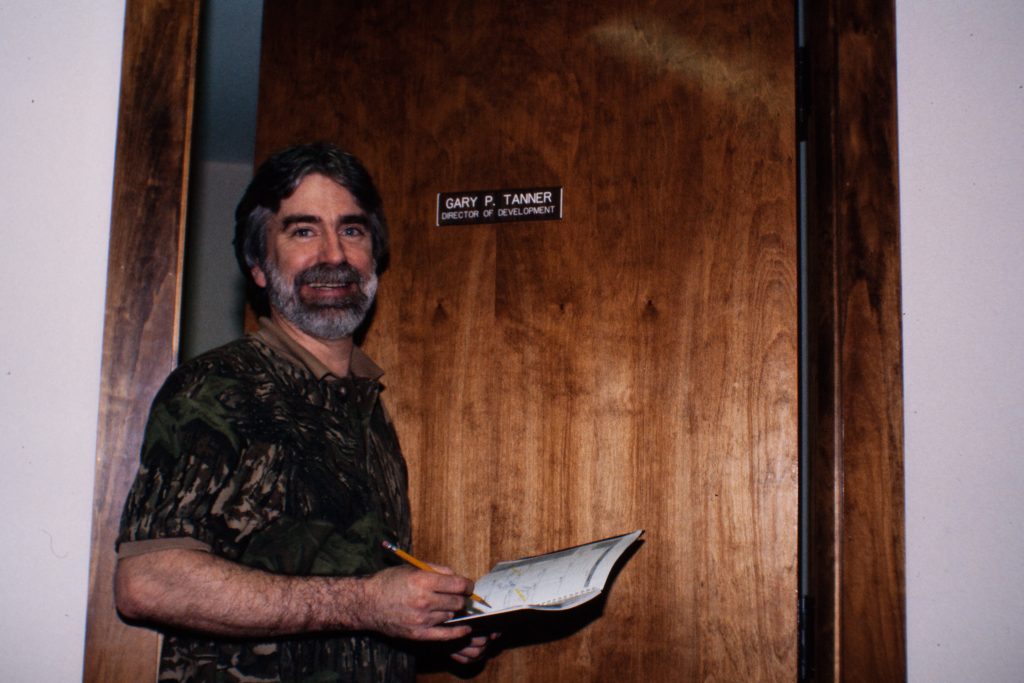Finding A (Regional) Direction
NWTF regional directors have long been a driving force in conservation fundraising – in the past, today and into the future.
In the winter of 1987, Charley Burke was in the middle of working on the start of a turkey telemetry program for the Wisconsin Department of Natural Resources. He was making an impact on the growth of wild turkey populations at the state level but wondered if there was a bigger opportunity.
In a discussion with Carl Brown, former NWTF chief operating officer, Brown told Burke bluntly, “With the NWTF, you’ll have a bigger impact on turkeys nationwide, more so than you ever will working for the state agency.”

Burke believed it, and in early 1988, he joined a short list of NWTF regional directors beginning to form that would serve as a catalyst for banquets and conservation fundraising efforts across the country. Burke and Gary Tanner were hired on the same day, the second and third NWTF regional directors. Their hire date was one year behind the NWTF’s first regional director, Brian Hyder. Hyder covered Delaware to Texas, while Tanner traversed much of the East region and Burke was tasked with Wisconsin and the West.

“In about 1990, I think I traveled about 65,000 miles and stayed in hotels 250 nights out of the year,” Tanner said. “My ex-wife used to say she stayed around because I was gone all the time.”
Brown and former NWTF CEO Rob Keck planned to grow chapters through those first regional directors, hire more people and split the territories. Slowly but surely, it worked, but not without trying times.
The NWTF Super Fund, unique only to the federation, was created in 1985 to split funding from events between local and state chapters and the national office to complete missionrelated work. Early on, Burke recalls, some states didn’t want to share funding. In addition, with a mostly “Southern Baptist” National Board of Directors, as Burke recollects, there was some disagreement over mixing alcohol with conservation events. That got worked out, of course, as a few cold beverages never hurt live auction bidding.
Burke helped grow NWTF chapters in his home state, which led to the hiring of Dick Rosenlieb, and Minnesota, which eventually drew in Ron Schara and Tom Glines, as well as in the West, leading to the hire of Randy Gaskins – all longtime NWTF regional directors.
“Our first job was to find our replacement,” Tanner said.
Burke added, “The membership base grew and the revenue stream grew. I think we had 12 events that first year, and it was clear that was the direction we needed to go.”
Tanner recalled a state convention near Rochester, New York, which resulted in several Syracuse University students on the steps protesting the NWTF’s efforts. Tanner said he had to hold back one of the chapter leaders from decking a protester who had gotten into the building and created a disturbance.
Keeping the peace and working with volunteers from all walks of life, while using people skills and fundraising talents – it was all in a day’s work for a regional director. Even setting up the stage for a band with a missing stage crew.
“I think it was a national convention in Memphis on a Saturday morning; we were told the band’s crew that set up their instruments and stage was on strike,” Burke remembers. “We weren’t supposed to move the equipment due to labor contract requirements, but Carl (Brown) said the show must go on, so we moved their stuff on the stage. We kind of had to be a jack of all trades.”
All in the name of fundraising for the wild turkey and our hunting heritage, regional directors have long been the unsung heroes of the NWTF. Tanner worked for nearly a decade and saw the growth from the first sales meeting of five to nearly 20 regional directors at his last meeting, plus an increase in hundreds of local chapters nationwide.
“I’m really proud of what we did,” said Tanner, who went on to serve as the executive director of American Museum of Fly Fishing in Manchester, Vermont. “It was satisfying. Anything worth doing has its low and tough moments, but it was fun to be on the ground floor of an organization doing good things. It was hard work, but we just had to produce.”
Burke, meanwhile, stuck around for 32 years before retiring, and got his money’s worth out of a career that saw the explosion of wild turkey populations, turkey hunting and the rise of the NWTF. He still thinks about how the NWTF’s success in helping transform the wild turkey landscape over the last 50 years has made the great game bird so common-place, some no longer appreciate it to the level it deserves.
“When we first started, turkeys were a novelty with limited distribution but great potential to occupy suitable range,” he said. “The satisfaction is looking back and saying, ‘I was part of a national recovery of a species.’ The bitter pill to swallow is the perception today. Turkeys were guarded to a degree when they were first released, and it was something to hear one gobble. Years later, people don’t have that same awe and appreciation for how far wild turkeys have come. Not everybody appreciates the road to recovery, so how do we keep that story alive for our kids and grandkids to discover?”
It’s a fair question from one of hundreds of regional directors who have and still work tirelessly for the wild turkey. The NWTF, today, has more than 40 regional directors across the country, raising millions of dollars annually for one thing only: the mission of wild turkey conservation and the preservation of our hunting heritage – keeping the story alive for future generations.
NWTF Field Staff
Contact your regional director or find another NWTF staff member in your state by going to www.nwtf.org/who-we-are/our-people.
CONNECT WITH US
National Wild Turkey Federation
770 Augusta Road, Edgefield, SC 29824
(800) 843-6983
National Wild Turkey Federation. All rights reserved.
